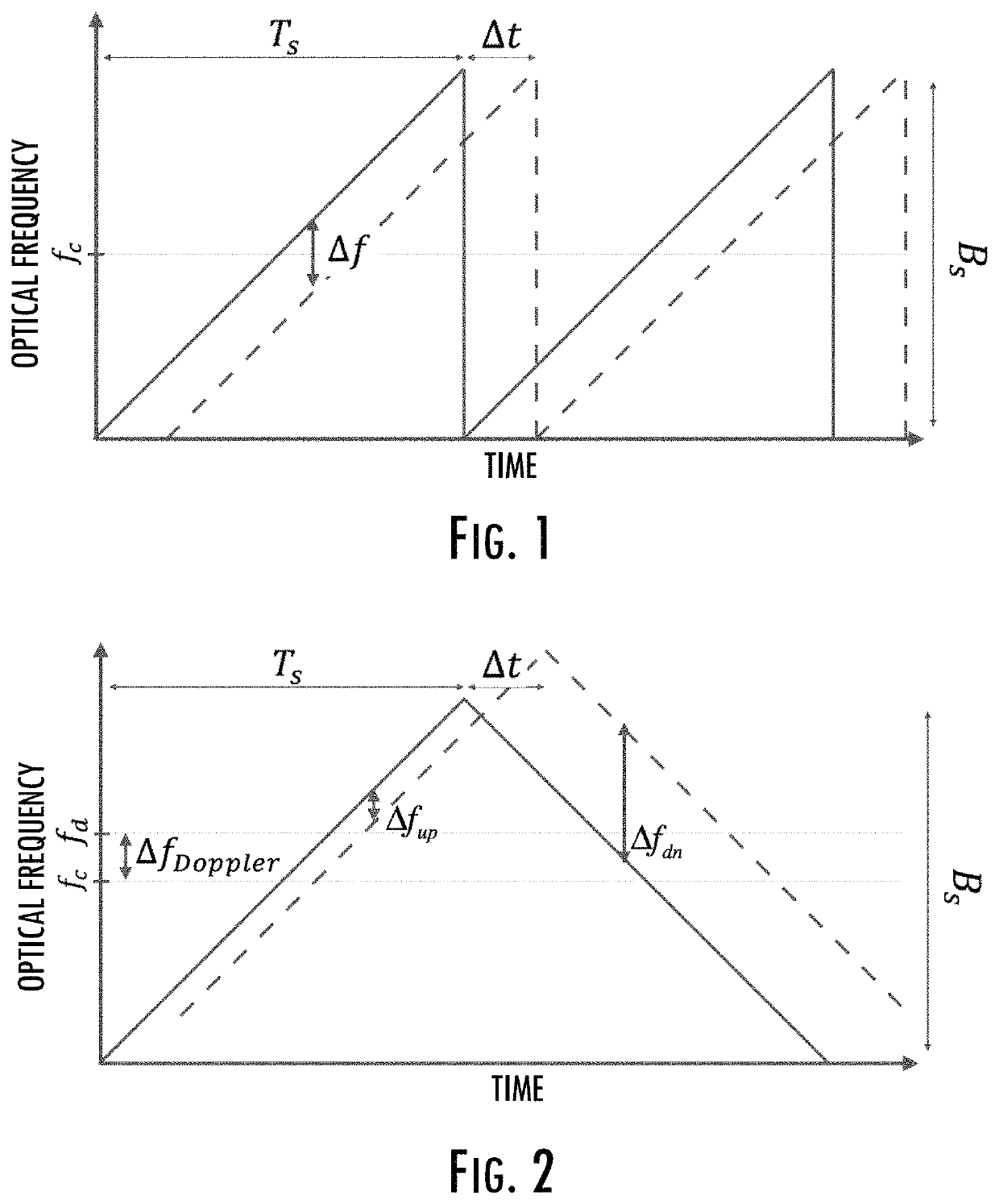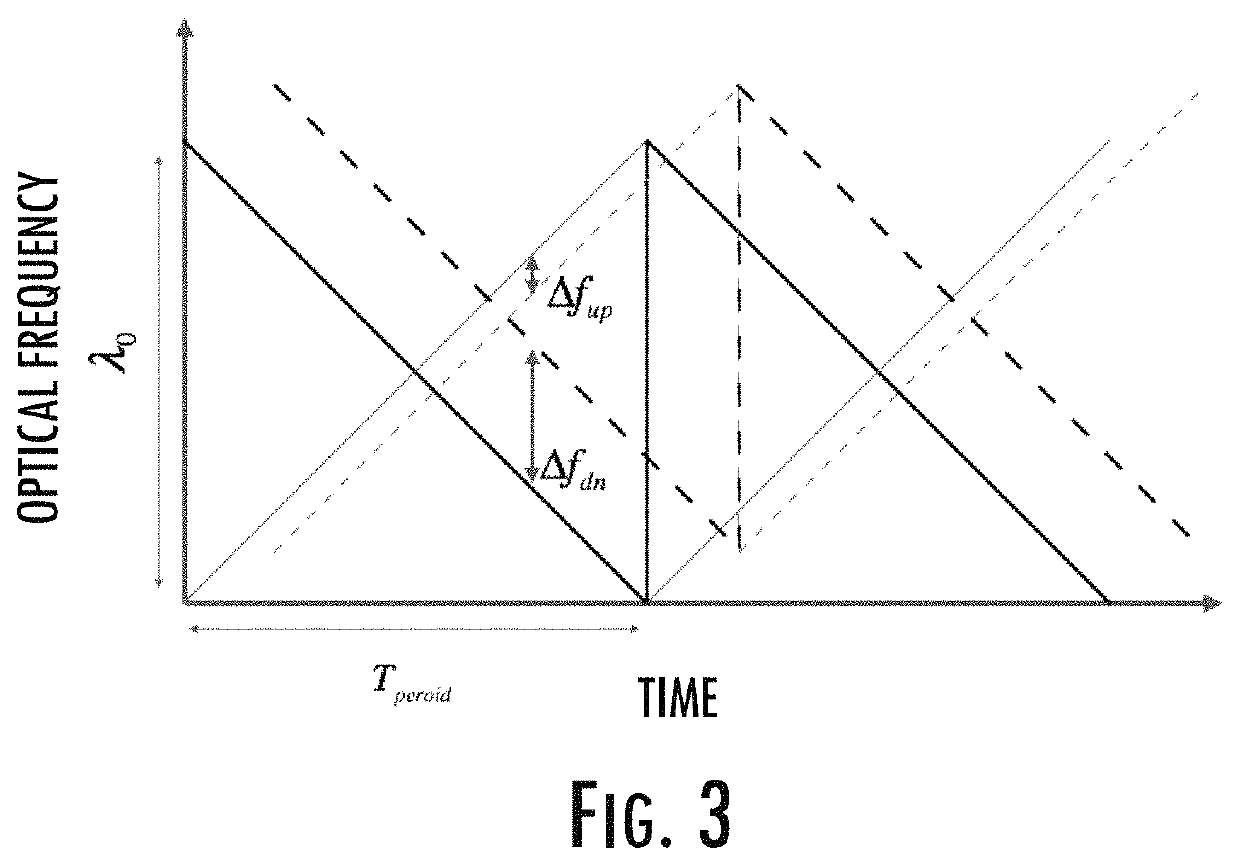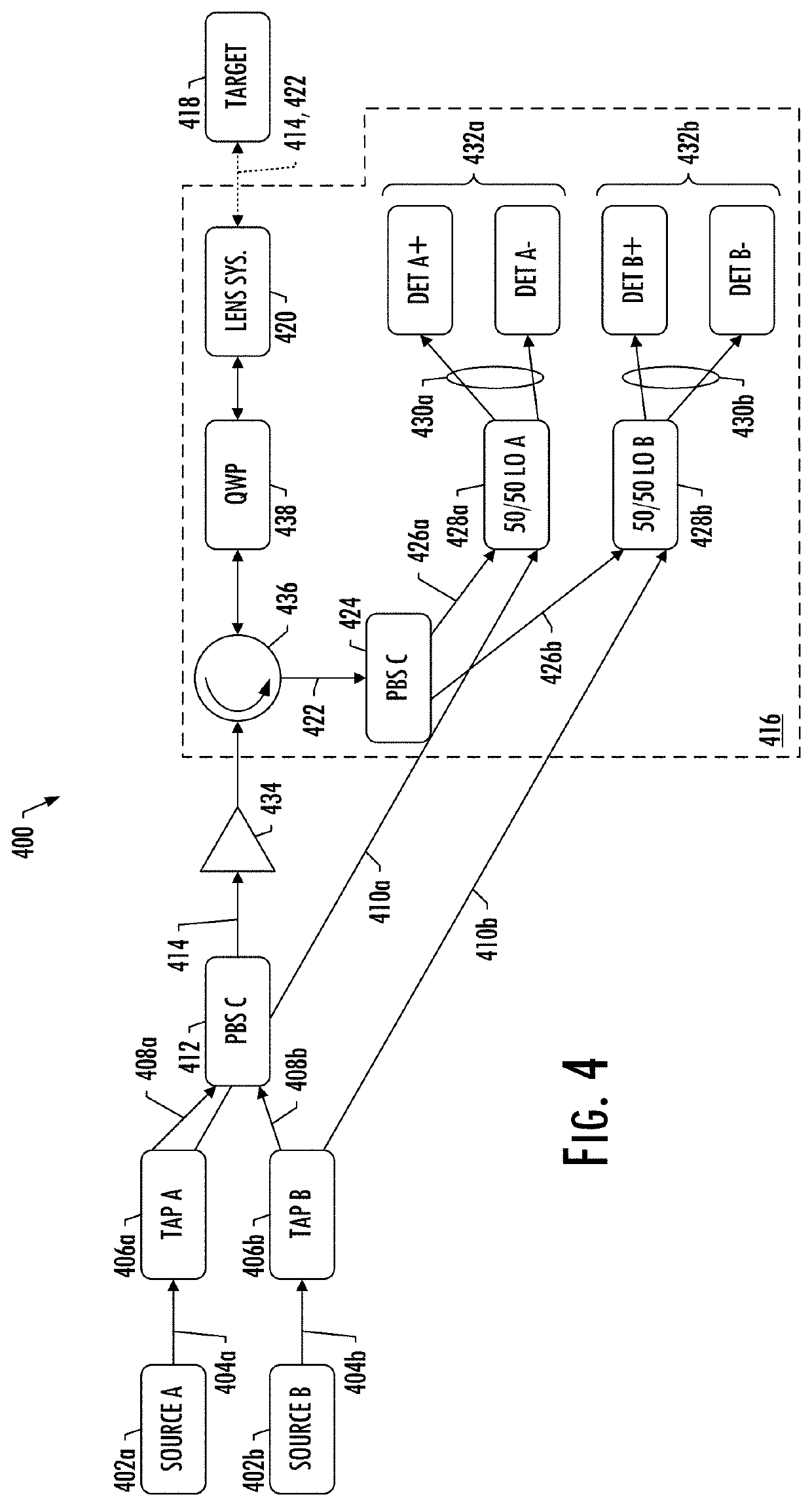Simultaneous measurement of range and velocity using optical radar
a radar and optical technology, applied in the field of traditional light detection and ranging, can solve the problems of not being able to measure the range and velocity of objects simultaneously, unable to achieve the effect of achieving the effect of reducing the power output of the system
- Summary
- Abstract
- Description
- Claims
- Application Information
AI Technical Summary
Benefits of technology
Problems solved by technology
Method used
Image
Examples
Embodiment Construction
[0036]Example implementations of the present disclosure propose a method to measure the range and velocity simultaneously without suffering major losses in the receive path and with a circuit that is compatible with current photonic integrated circuits such as, but not limited to, silicon photonics, silica or programmable logic controller (PLC) processes.
[0037]Example implementations of the present disclosure are directed to a method to construct an optical radar that is capable of simultaneous measurement for range and velocity measurement in a compact, mass-manufacturable fashion. Example implementations have application in a number of different contexts, including in sensing contexts such as those in transportation, manufacturing, metrology, medical, security, and the like. For example, in the automotive industry, such a device can assist with spatial awareness for automated driver assist systems, or self-driving vehicles. Additionally, it can help with velocity calibration of a ...
PUM
 Login to View More
Login to View More Abstract
Description
Claims
Application Information
 Login to View More
Login to View More - R&D
- Intellectual Property
- Life Sciences
- Materials
- Tech Scout
- Unparalleled Data Quality
- Higher Quality Content
- 60% Fewer Hallucinations
Browse by: Latest US Patents, China's latest patents, Technical Efficacy Thesaurus, Application Domain, Technology Topic, Popular Technical Reports.
© 2025 PatSnap. All rights reserved.Legal|Privacy policy|Modern Slavery Act Transparency Statement|Sitemap|About US| Contact US: help@patsnap.com



